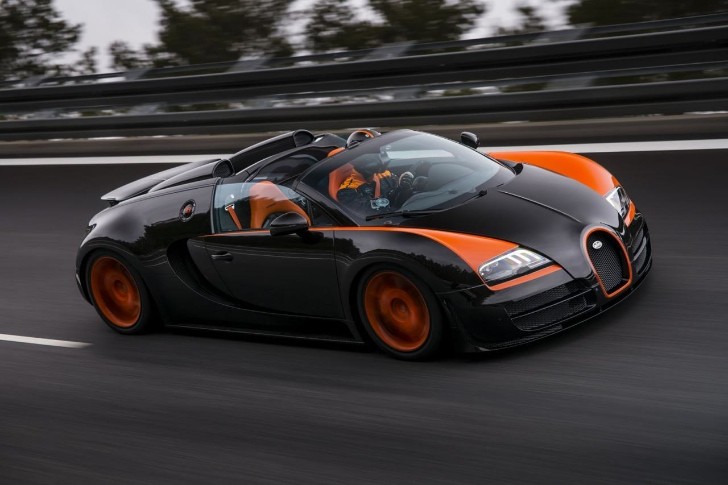The Bugatti Veyron SuperSport caught the world’s attention in 2010 when it set the record for the world's fastest production car, but that crown may now have to be passed on. Hennessey Performance announced on Monday that its Venom GT hit 270.49 mph (435.31 km/h) at the Kennedy Space Center in Cape Canaveral, Florida, settting a new world speed record for a 2-seat sports car. Driven by former Michelin tire test engineer, race driver, and Director of Miller Motorsport Brian Smith, the time for the Venom GT was independently verified, but has yet to be officially recognized by the Guinness Book of World Records.
The blistering run took place on February 14 at the 3.2-mile Space Shuttle landing runway at the Kennedy Space Center with special permission from NASA. Taking place on a straight run rather than on an oval or a varied test track like the Nurburgring, this was a demonstration of flat-out acceleration from a dead launch, while still leaving enough braking space at the end of the run to keep it from ending in a very expensive crash.
“It was still pulling,” says Smith. “If we could run on an 8-mile oval we could go faster than that. On the very top end there was a little wandering but, hey, we’re going 270 mph! The Venom GT didn't require any big corrections, and the Michelins held traction really well.”
Verification of the Venom GT’s speed was by GPS data-acquisition systems manufacturer Racelogic. “The Venom GT attained a maximum speed of 270.49 mph as measured by our VBOX 3i GPS system,” said Racelogic engineer Joe Lachovsky.
The speed record is already steeped in controversy after challenges to the Veyron’s 2013 claim surrounding adjustments to the hypercar’s limiter. But after review Guinness allowed the record to stand.
The previous record of 267.8 mph (431.072 km/h) was set by Pierre Henri Raphanel in the 1,183-hp (870-kW) Bugatti Veyron 16.4 Super Sport in July 2010.
However, despite this month’s result, Hennessy cannot officially claim the fastest production car record because that requires making two runs in opposite directions on the same day. John Hennessey explained in an interview with Top Gear that this wasn't possible because NASA wouldn't allow it.
Based on the Lotus Elise/Exige, with which it shares a number of components, the 2,743 lb (1,244 kg), mid-engine, rear-wheel drive Venom GT is not what most people would call elegant, with its carbon fiber and composite/aluminum hybrid monocoque-space frame, massive brake-cooling vents, oversized, yet cramped two-seater cab followed by a rear that looks like someone gave it a swift kick in the pants. That being said, the Venom GT is built for the track, not garden parties, and all the flaring wings and road-gobbling grilles come together in a frighteningly attractive Koenigsegg sort of way.
Inside the Venom GT is a 90-degree, seven-liter V8 engine with twin precision ball bearing turbochargers, an iron block with aluminum heads, electronic sequential multi-port fuel injection pumping a terrifying 1,244 bhp (914 kW) and 1155 lb-ft (1565 Nm) of torque feeding into a Ricardo six-speed manual gearbox.
On the track, this translates into 0 to 60 in 2.7 seconds, so you'd know what it feels like to leave your eyeballs behind. The Venom GT already holds the Guinness World Record of 0 to 300 km/h in 13.63 seconds and the Hypercar World Record for 0 to 200 mph in 14.51 seconds. Beyond its verified speed of 270.49 mph, Hennessy claims that the Venom GT can do 278 mph (447 km/h) flat out..
"“I wanted to be an astronaut when I was a kid," says company founder and president John Hennessey. "Neil Armstrong was my childhood hero. Even though the astronaut thing didn't work out for me, I am humbled to have had the opportunity to set our speed record on the hallowed grounds of the American space program. Building and validating our Venom GT as the world’s fastest has been a long journey and a lot of hard work. But as President Kennedy once so eloquently said, ‘We choose to go to the moon in this decade and do the other things, not because they are easy, but because they are hard.’ As a result we have built a better car and a better team at Hennessey Performance (HPE)."
If you’re interested in buying a Venom GT, be prepared for a little cry because the record-breaking version sells for US$1 million.
























